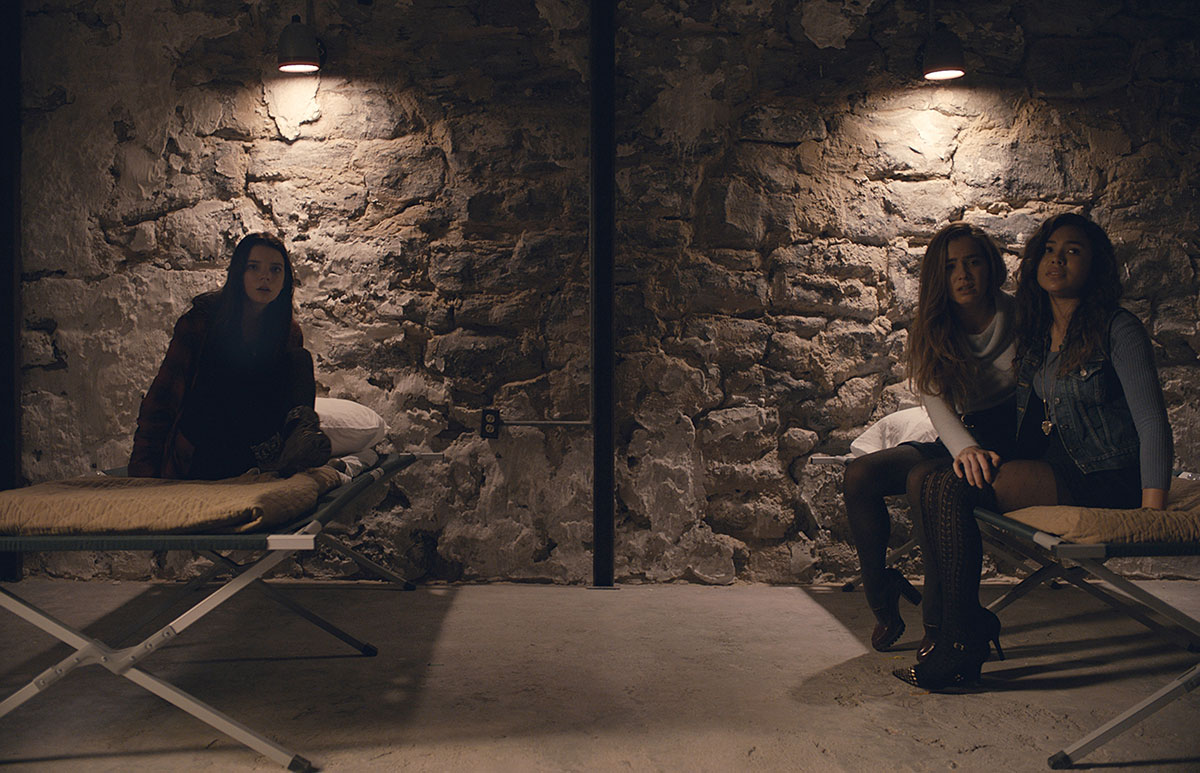With each new film, director M Night Shyamalan is slowly
climbing his way back into the fold of competent filmmaking/storytelling. A
place he hasn’t been since ”The Sixth Sense.”
His last picture, “The Visit” was a feverish fairytale mockumentary
that blended horror and comedy quite well, and even managed to enliven the
mostly stale “found footage horror” gimmick. It was one of the year’s biggest
surprises. His most recent film “Split” is an entirely different beast—a
complex, deeply unsettling kidnapping horror film with an unexpected dose of
Sci fi. It’s expertly crafted, full of twists and turns, difficult to watch at
times (some of the subject matter is extremely dark and icky) but never unwatchable
thanks to its tense and unpredictable structure.
“The Visit” is more fun-- an effective back-to-basics horror
comedy, while “Split” is more ambitious and harder to pin down. However,
Shyamalan also overthinks things in the latter film, especially during the last
third (pulling one too many rugs out from under you) resulting in a slightly
muddled finale.
“Split” gets going quickly. Three teenage girls, Claire
(Haley Lu Richardson), Marcia (Jessica Sula) and Casey (Anya Taylor-Joy) are
abducted by a mysterious man named Kevin (James McAvoy) and kept in an underground
bunker for unknown purposes. It turns out that Kevin suffers from split
personality disorder and has twenty-three distinct personalities trapped within
him. Some of them are harmless (like a nine year old kid) while others are more
sinister (an strict British lady named Patricia). Meanwhile, on the outside, we
see interactions between “Kevin” and his therapist Dr. Karen Fletcher (Betty
Buckley).
The craftsmanship in “Split” is top notch. The cinematography
by Mike Gioulakis manages to be both kinetic, his camera navigating the tight
creepy corridors of the bunker with frantic ease, and static— the crooked
camera angles and reoccurring shots through keyholes and door cracks create a
claustrophobic sensation. And the editing by Luke Franco Ciarrocchi is jarring
and paranoid without being disorienting or rendering the action incoherent.
Meanwhile, Shyamalan’s direction is meticulous and patient, creating an
atmosphere of gradual and impending dread.
McAvoy gives a difficult, multifaceted performance. His
“Kevin” can be menacing and sweet, calculating and erratic as his various
personalities jockey for attention. While his multiple personalities aren’t three-dimensional
characters, each one is distinctive enough to leave a memorable impression.
They don’t blend together. McAvoy pulls you into his character’s traumatized,
complex psyche without giving you full access. There’s plenty we don’t know,
which keeps us on our toes. Meanwhile, up and comer Taylor-Joy is also great,
playing a clever and resourceful heroine suffering from her own psychological
damage. Casey is resilient and cunning with an undercurrent of emotional
fragility. Taylor-Joy’s performance only gets stronger the more we learn about
Casey and her background.
“Split” contains some very dark and disturbing subject
matter, mostly related to Casey’s troubled background. Occasionally, I felt
icky and slumped down in my seat in discomfort. At the same time, the film
contains its fair share of humor—off beat jokes, black humor, horror/thriller
moments that are outright cheesy. This combination of horror and comedy doesn’t
always jell, and sometimes I felt uneasy about laughing at the film’s humor. That
being said, the comedy never completely undermines the disturbing subject
matter or makes light of it. Shymalan shows thoughtfulness and restraint.
The big third act turn (you can’t have a Shymalan picture
without one) involving a “twenty fourth personality” is ridiculous to say the
least and the science/psychology behind it is equally ridiculous. Though it’s
conveyed with a straight face and Shymalan at least tries to explain how it
could work in this universe (the seeds are planted during the therapist
scenes). In other words, it doesn’t feel like it was pulled out of thin air and
dropped on you unexpectedly for the sake of a twist; there’s at least some development.
My main issue with “Split” has to do with the second twist, one final stinger during
the last scenes. Without spoiling, it just doesn't feel appropriate for this
particular film. It’s a rather drastic and goofy narrative pivot that comes too
late and therefore feels unnecessary. The “wink-wink-nudge-nudge” nature of the
last scene somewhat cheapens the film overall. I think Shymalan got too clever
for his own good during the writing process.
I have other reservations regarding the film’s last third. There
are some holes in logic (concerning the true location of the bunker) and
Shymalan loses track of the film’s geography; the layout of the bunker becoming
slightly confusing. But overall, like “The Visit,” “Split” is a step in the
right direction for Shymalan and shows how great a horror filmmaker he can be.
B-

Watch Split online full movie on www.Movies2Watch.xyz
ReplyDelete